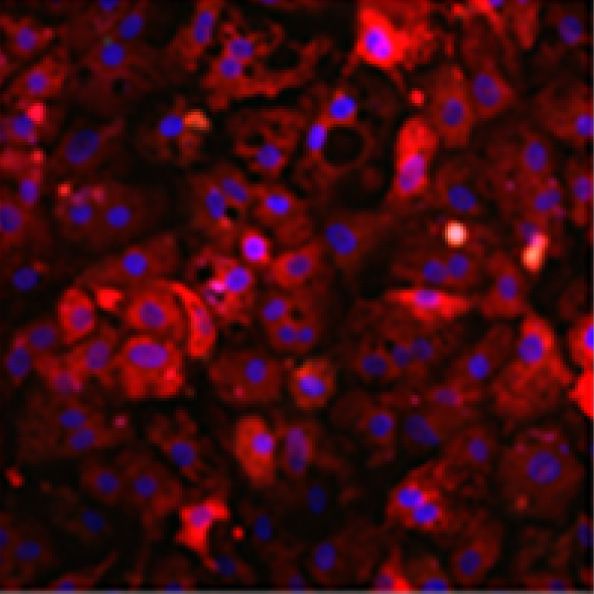Human Stem Cell-derived Hepatocytes
Human Stem Cell-derived Hepatocytes
Cellartis enhanced hiPS-HEP v2 kits provide an inexhaustible supply of mature hepatocytes derived from human induced pluripotent stem (hiPS) cells. hiPS-HEP cells have functional drug-metabolizing machinery over a 14-day assay window, making them ideal for in vitro drug discovery, drug metabolism, and toxicology-related studies. Mature, robust metabolic features support metabolic disease modeling.
The user-friendly kit format includes complete media and components for long-term assays. Compared to other hepatic cell models, these cells survive longer in culture, which enables a longer assay window in chronic toxicity experiments and for metabolic disease modeling.
Overview
- Complete kit for thawing, plating, and culturing the provided cells
- Highly homogeneous population with consistent performance between batches and over time
- Cells are functional and stable for a 14-day assay window
- Cells show long-term, stable CYP450 activities
- Cells express key hepatocyte proteins, including α1AT, Alb, CK18, HNF4α, and E-cadherin
- Cells secrete physiologically relevant levels of albumin and urea
- Cells demonstrate functional insulin and glucose regulation
- Cells show Phase I and II enzyme activities
- Cells demonstrate LDL uptake
Applications
- Toxicity testing, including chronic toxicity assays
- Drug discovery and development
- Metabolic studies
- Metabolic disease modeling
Watch the On-Demand recordings below from Dr Ralitsa Madsen and Dr Montse Morell to learn more about optimizing and speeding up your hiPSC-based disease modeling projects:
- Day 1 Short Talk 2;
“CRISPR-based hiPSC models of genetic PI3K pathway activation”
Dr Ralitsa Madsen, UCL, London, UK
- Day 2 Short Talk 1;
“Using hiPS gene editing to create a tyrosinemia disease model”
Dr Montse Morell (Takara Bio USA), Mountain View, USA
CYP450 activity is stable in enhanced hiPS-HEP cells over 21 days.

CYP450 activity is stable in enhanced hiPS-HEP cells over 21 days. LC/MS was used to analyze CYP450 activity in cultured enhanced hiPS-HEP cells previously derived from the hiPS cell lines ChiPSC12, ChiPSC18, and ChiPSC22 (abbreviated as C12, C18, and C22). CYP3A (Panel A), CYP2C9 (Panel B), CYP1A (Panel C), and CYP2C19 (Panel D) activities in enhanced hiPS-HEP cells are stable over an extended culture time. Cryopreserved human primary hepatocytes (hphep), which are functional in culture for a significantly shorter time than enhanced hiPS-HEP cells, were thawed and cultured for 20 hours, and their data are shown as the black bar in each panel.
Albumin is present in enhanced hiPS-HEP cells through 20 days in culture.

Albumin is present in enhanced hiPS-HEP cells through 20 days in culture. Panel A. Representative images of enhanced hiPS-HEP cells from human iPS cell line ChiPSC18 (C18) taken 12 days after thawing (right), compared to cryopreserved human primary hepatocytes (hphep) taken 24 hr after thawing (left). Cells were stained for albumin and DAPI. Panel B. Albumin secretion as measured by ELISA; n=2 for enhanced hiPS-HEP cells, with the exception of C18 at 20 days (n=1), and n=3 donors for hphep.


